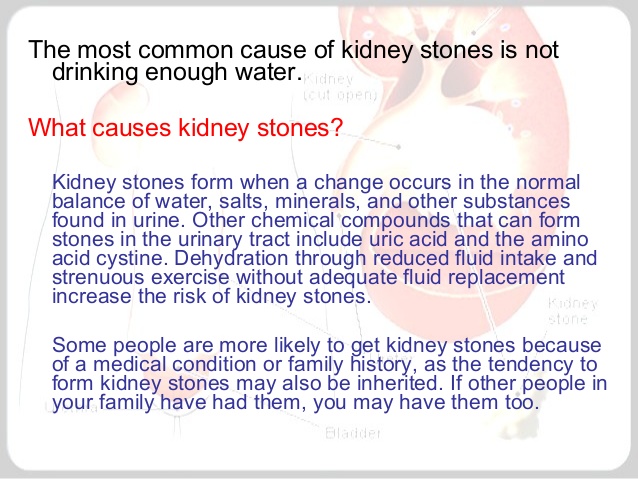One of the most painful experiences is the one originated by kidney stones. Grown-ups have been watched crying due to the pain caused by these intruders of the human body.
Kidney stones are formed in the kidneys when high levels of different minerals and salts are in the urine and they come in different shapes and texture; expelling them through the urethra with the urine is also an incredibly painful experience. These factors have given kidney stones a well-deserved terrible reputation.
Here we are providing all the necessary information about kidney stones and their symptoms, as well as the way to prevent from suffering it again.
Kidney stones are classified into four categories, which are calcium stones, uric acid stones, struvite stones, and cystine stones. Calcium stones are the most common kind of stones; it does not mean that you avoid calcium found on food, but the one you found in calcium supplements. Uric acid ones are generated when eating lot of fish, shellfish, and meat increased the amount of uric acid in the urine. The struvite stones are formed after a urinary tract infection and they strike suddenly and grow fast. And the cystine types are formed caused by cystinuria, an inherited, lifelong disorder, being a very uncommon sort of stones.
All these stones can be caused by several factors; one of them is recurrent urinary tract infections which increase the levels of ammonia and pH in the urine. Other factor is ulcerative colitis or any other chronic bowel inflammation which leads to diarrhea and so to dehydration which makes less urine and more concentrated leading to stone formation. Obesity and diabetes are the other two factors which have a great influence in the formation of kidney stones.
Kidney stones are normally associated by pain, but sometimes a person can have stones and they can go unnoticed, especially if they are small. But most of the times, they are very painful to bear. To determine whether you have kidney stones, here are the signs which show the presence of these unwelcome guests:
• Sharp pains in your back, below the rib cage, lower abdomen, or in the groin area.
• Nausea.
• Vomiting.
• Pink, red, or red brown blood in the urine.
• Feeling the need to pee often.
• Only able to pee a bit (or not at all)
• Burning or pain while peeing
• Fever
• Chills
These symptoms can be very similar to those of urinary tract infection; so if they are shown, it is highly recommendable to ask the doctor for a urine test or blood or imaging tests to confirm the presence of stones in the kidneys.
Once the stones are out, there are some steps to follow to avoid them. Drinking enough water every day is one of the best ways not to generate stones one more time or ever. Eliminating high-sodium food could reduce the levels of calcium and also diminishes the generation of the sort of stones.
If following the above recommendations is not good enough to prevent kidney stone formation, more significant dietary measures should be recommended by the doctor in order to avoid them. Since not every solution works with everyone, a person who suffers for kidney stones should follow an unique treatment which varies from person to person.

